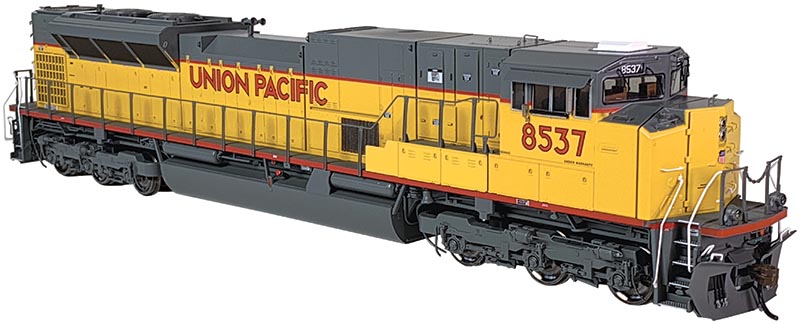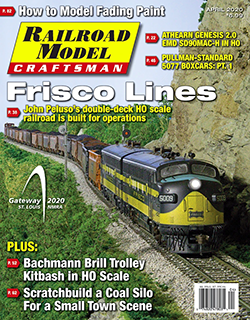 Review by Harry K. Wong/photos by the author
Review by Harry K. Wong/photos by the author
With parallels to locomotive development during the 1950s and 1960s, a new round of horsepower wars ensued again between locomotive manufacturers during the final decade of the twentieth century; this time between General Electric and the Electro-Motive Division of General Motors here in North America. As each locomotive manufacturer was reaching the practical design limits from their existing prime movers for achieving horsepower output and lower emissions in their locomotive offerings in the 1990s, both EMD and GE sought to either license or develop all-new prime mover designs for their future locomotives. General Electric chose to employ technology licensed from Deutz AG for their next-generation 7HDL prime mover architecture, while EMD chose to develop their own all-new four-cycle prime mover family, initially known as the 265H. The 265 represents the diameter of each cylinder in millimeters, with each cylinder displacing 1010 cubic inches. By comparison, prior generations of EMD prime movers – all two-stroke engines – measured 710, 645 or 567 cubic inches per cylinder. Four-cycle designs are typically capable of producing lower exhaust emissions than comparable two-cycle diesels.
After years of development, in 1995 EMD unveiled its all-new SD90MAC-H, equipped with a 6,000hp 16-cylinder 265H prime mover. Even today, this unit remains the largest and longest single-engine locomotive ever produced by Electro-Motive, measuring out at a little more than 80 feet over pilot faces. The SD90MAC-H was intended to mark the pinnacle of EMD’s locomotive line of the period. Union Pacific was the first customer, placing an order for 22 units, with the first example delivered to the railroad in April 1996. The remainder of the order trickled out over the next three years as many teething problems were encountered.
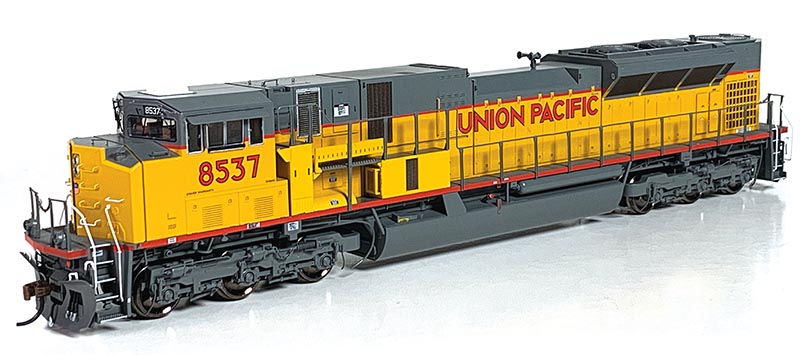
The subject of this review, however, is Athearn’s rendition of the later Phase II SD90MAC-Hs, built beginning in November 1999, with the first units entering service in February 2000 on the Union Pacific. Forty units in all were delivered to the railroad as UP 8522-8561. Farther north, Canadian Pacific sampled four units, numbered as CP 9300-9303. In Australia, Fortescue Metals Group (FMG) took delivery of four units customized to their specifications. EMD retained one unit for development purposes as EMDX 90.
In all, 49 Phase II SD90MAC-Hs were constructed. Phase II SD90MAC-Hs differed visually from Phase I units and their SD9043 brethren. Phase II units introduced a new cab design later also seen on EMD’s SD70ACes, and differed from their earlier siblings also by having a different equipment configuration behind the cab on the conductor’s side, redesigned dynamic brake grilles, and other changes.
Unfortunately, whether Phase I or Phase II, none of the prototype SD90MAC-Hs ever overcame their technical and reliability issues. Most spent a significant portion of their lives set aside in front of the shop awaiting attention. On the Union Pacific, the final examples were retired from service by the end of April 2006. Since then, the units transitioned between different owners before becoming fodder for conversion programs or scrapped outright.
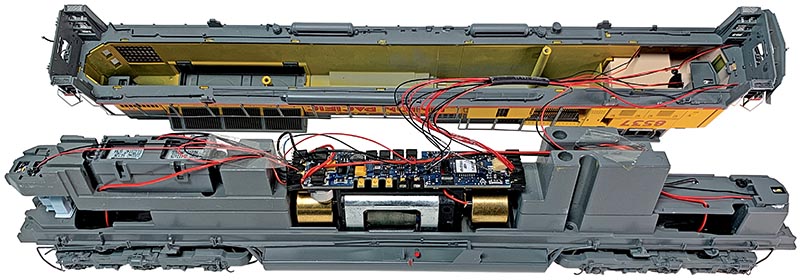
Between 1995 and 1999, Union Pacific also took delivery of 309 similar-looking 4,300hp SD9043MACs, with the intention of later replacing the 710-series prime mover with 265Hs once the technical issues were settled, but the SD9043s never were re-engined with 265Hs as hoped. Canadian Pacific also rostered sixty SD9043MACs, the vast majority of which are now currently being rebuilt as SD70ACus.
Our sample for this review represents Union Pacific 8537, an SD90MAC-H Phase II. Its real-life counterpart entered service on July 4, 2000. As an Athearn Genesis 2.0-branded model, this HO scale reproduction is a premium-level product with the highest level of detail, lighting and sound features offered by this model manufacturer.
Unboxing the model, purchasers will find each SD90MAC-H shipped securely within a sleeved plastic clamshell encased in foam within a glossy thick paper box.
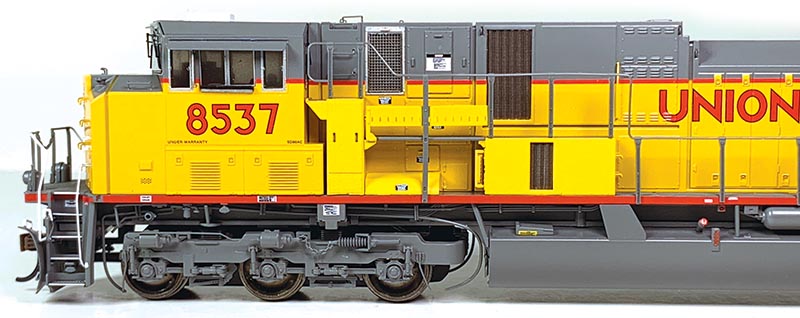
The paint and decoration are exquisite, with no flaws noted. The list of fine details includes separately-applied etched metal sunshades, wire-form grab irons, plastic cut levers, pilot snowplow, plastic M.U. hoses, etched metal air intake screens, finely molded walkway tread, and more. Beneath the side sills, a robust suite of underbody details is provided, including sanding lines to the inner and outer axles, three separate air reservoirs complete with air dryers, a bell and a full complement of traction motor cabling and air piping under the side sills. The handrails are molded of flexible Celcon plastic in UP Harbor Mist Gray, with painted white railings adjacent to each step well.
The cab roof is attached via magnets, and can be removed on demand for installation of crew figures into the cab if desired. The cab interior itself is fully painted in three colors with separate desks for both the conductor and engineer and three seats, each equipped with armrests. Side window “glass” is tinted per the prototype, and etched metal windshield wipers are applied to the windshields and back windows on the cab. As a Genesis 2.0 offering, this model also features see-through steps at each stepwell, separate number board lighting and illuminated ground lights above the front truck…


